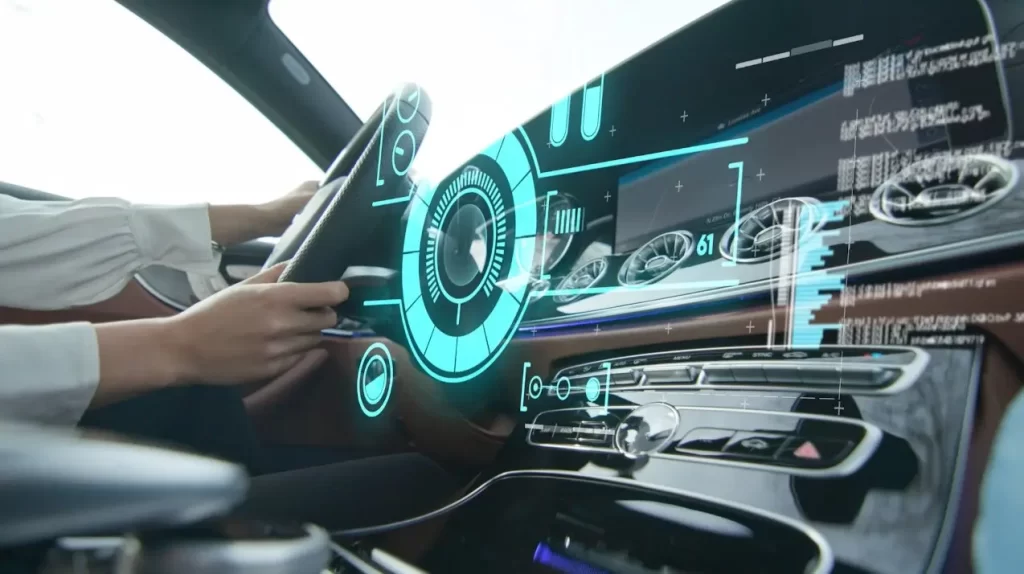Biometrics offer an alternative to keys or keyless entry systems by using physiological and behavioral data to verify driver identity, providing additional security while creating an enhanced in-car experience for drivers.
Fingerprint scanning, iris recognition and facial identification technologies have become much more resistant to interference over the past four or five years, according to Tier 1 supplier reports.
Fingerprint Scanners
Fingerprint scanners are among the most sophisticated and secure biometric authentication technologies. Their advantages include strong security while still offering user convenience when combined with another factor such as a key fob. Furthermore, fingerprints are unique to each person making them virtually impossible to replicate by third parties or crack.
Optical scanners create digital images of fingerprints using miniature capacitors which store and discharge electric current to form images of fingerprints. By analyzing how ridges and valleys on a person’s fingers interact with these capacitors, an algorithm can identify distinct features – like where one ridge ends or splits into two – which enable matches between users.
Capacitive scanners use similar technology with lower power requirements by creating an electric charge when your fingertips come into contact with the sensor, then using this charge to detect fingerprints. By matching it against one of its stored images, cars can quickly determine whether a driver is an authorised user.
Retinal Scanners
Auto manufacturers are gradually adopting biometrics into their vehicles to provide keyless entry and operation while personalizing driving experiences to meet individual preferences, physiological states, or other considerations.
Retinal scanning is an efficient and accurate method for verifying identity by using the unique pattern of blood vessels located behind each eye. A retinal scanner scans this pattern with flashing UV light and converts it to an image code; its failure rate is less than two percent.
However, the technology does have some drawbacks, including a lengthy enrollment process and limited user applications. Furthermore, having diabetes or glaucoma could hinder its use; there may also be security issues related to retinal scans being vulnerable to hacking.
Voice Recognition
Voice recognition uses pitch, modulation and tone analysis to accurately identify an individual. It’s an extremely secure method used both for identification and verification. But hackers have found ways to evade these systems; choosing the best one requires careful thought and consideration – try and find one with anti-spoofing capabilities as this will block access by hacker bots.
While many of the technologies mentioned have positive social aspects, they also pose serious privacy and freedom of expression concerns. Facial recognition may be used without consent or knowledge by governments without their knowledge–with bias having been found in most algorithms. Furthermore, fingerprint scanners can be cross-matched between databases to use by law enforcement to track down suspects – creating privacy issues when collected covertly or as part of surveillance applications; any project employing these modalities should carefully consider their four tests for proportionality before proceeding with their deployment.
AI
Biometric sensors measure aspects of our bodies such as fingerprints, iris patterns, eye and facial geometry and palm vein patterns. Behavioural biometrics measures how we move, speak and present ourselves so as to verify identity as well as detect issues such as fatigue or illness which might impede driver safety.
Voice recognition systems can measure the pitch, modulation, and tone of an individual’s voice to identify them and assess whether their speech has been affected by medication such as sedatives or is simply dropping due to fatigue or illness.
Even as technology makes our lives simpler, biometric systems raise privacy issues. Accordingly, the Office of the Privacy Commissioner of Canada advises companies implementing any form of biometric system – whether for access or verification – to incorporate privacy solutions directly into its design from day one instead of trying to add them later on.
About Author
You may also like
-
Adapting Cars for Extreme Weather Climate Changes: A Driver’s New Reality
-
Minimalist Car Ownership: Smart Downsizing Strategies for Less Stress and More Freedom
-
Car-Sharing in the Countryside: A New Road to Rural Freedom
-
Your Car, Your Schedule: The Unstoppable Rise of Mobile Detailing and On-Demand Car Care
-
Revving Up: The Latest Trends in Car Modifications for 2025
 Restoration Techniques for Vintage Car Electrical Components: A Hands-On Guide
Restoration Techniques for Vintage Car Electrical Components: A Hands-On Guide 

